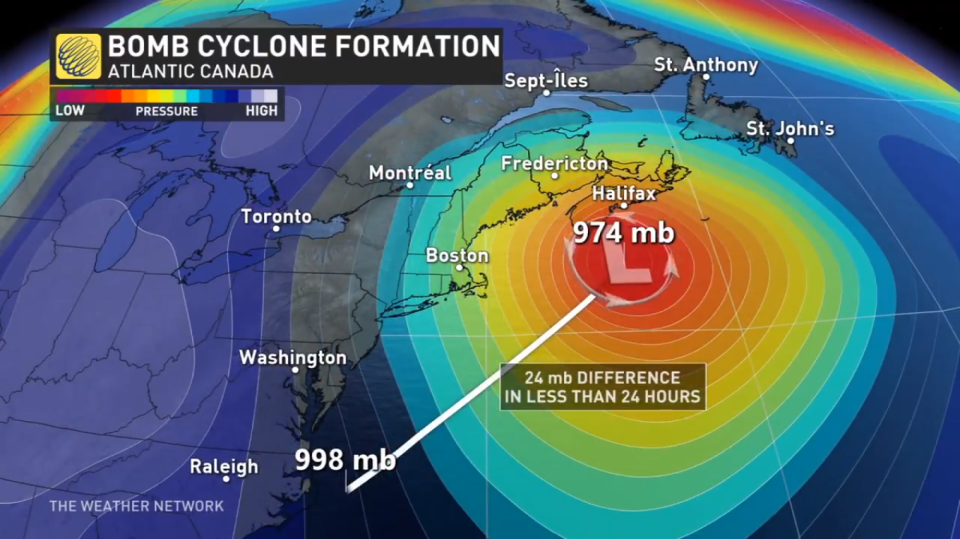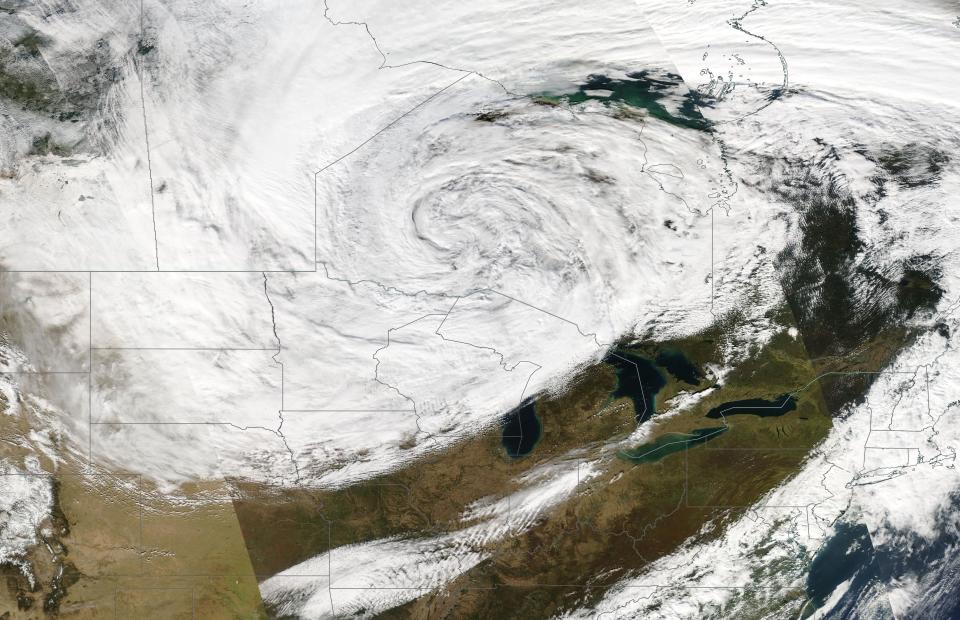Winter storms are a part of life in Canada. Some storms are so sturdy and disruptive, though, that it’s exhausting to easily brush them off.
The coronary coronary heart of winter is prime season for local weather bombs. These intense storms normally race up the East Coast and bury the Maritimes in a sea of wind-driven snow. It takes extremely efficient forces to enhance a humdrum winter storm proper right into a bomb cyclone.
DON’T MISS: How jet streams can fuel some of the most powerful storms
Jet streams strengthen storms in a rush
A jet stream is a strong ribbon of upper-level winds that varieties throughout the cruising altitude for passenger jets. Winds routinely scream through the jet stream at larger than 200 km/h. It’s exhausting to contemplate that these fast winds many kilometres above the underside can so deeply affect the local weather proper right here on the ground, nevertheless it certainly’s a severe driver behind our daily circumstances.


These winds diverge and converge as they twist and change their method through the jet stream. When these fast winds diverge or unfold out, air from the ground has to rush upward to fill throughout the void. As the jet stream strengthens and that divergence intensifies, the amount of air that may get sucked upward from the ground will improve, leaving a lot much less air and a centre of low pressure on the ground.
The phrases ‘weather bomb’ and ‘bomb cyclone’ stem from the time interval bombogenesis, or the speedy intensification of a low-pressure system in a quick timeframe. Meteorologists use utterly completely different metrics to measure bombogenesis, nonetheless in all probability probably the most broadly used requirements is when a low’s minimal pressure falls 24 mb in 24 hours.
Bombs away on the coasts
We typically talk about bomb cyclones when nor’easters are throughout the forecast. The hotter waters of the Atlantic Ocean can lend low-pressure strategies a elevate as they observe up {the japanese} seaboard, combining with the jet stream to allow these storms to dramatically intensify in merely a number of hours.
RELATED: What is the polar vortex? How it’s responsible for dangerous cold


A visible satellite tv for pc television for computer image of a really intense bomb cyclone that swirled into northern Ontario on October 27, 2010. (NASA Worldview)
Bomb cyclones are moreover frequent throughout the northern Pacific, as of us in British Columbia know first-hand, along with on the Prairies. A really intense storm in October 2010 entered northwestern Ontario with a minimal central pressure equal to that of a sturdy hurricane.
Bomb cyclones can lead to predominant disruptions
What’s so specific a number of bomb cyclone? A rapidly intensifying low-pressure system has a greater various to produce fouler local weather for folks throughout the storm’s path. If a storm bombs out as a result of it approaches the Maritimes, for instance, the realm may presumably be in for a tricky journey.
pressure gradient between the centre of the storm and the ambiance spherical it could lead to howling winds in a position to producing hurt, power outages, and coastal storm surges. Communities that journey out a local weather bomb normally study the system to a hurricane for its ferocious winds.
Intense dynamics all through the storm can energy air throughout the middle and better ranges of the ambiance to stretch and unfold out. This stretching causes air to rise rapidly, creating bands of snow so intense that they can even produce thunder. The combination of ripping snowfall and blustery winds can lead to blizzard circumstances.





